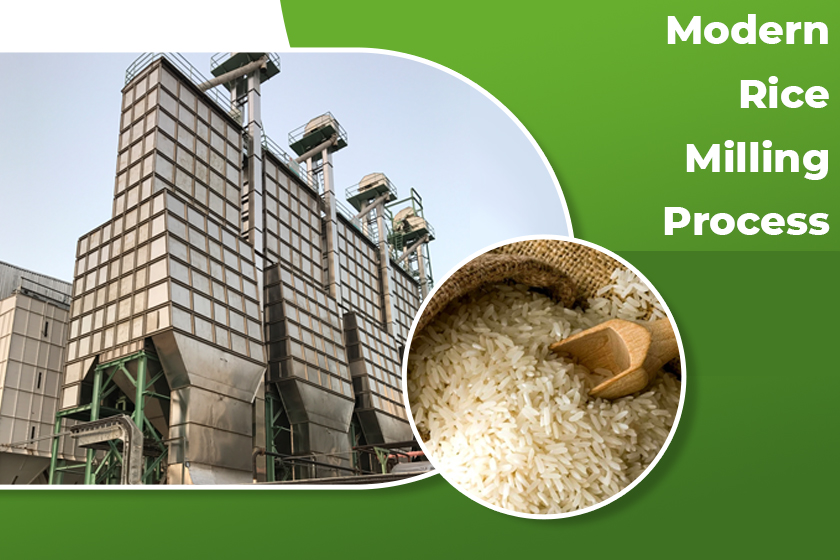The Rice Milling process has changed drastically over the years. The modern rice milling process combines several operations to generate a higher yield and produce a better quality of white rice from paddy or rough rice. If you’re new to rice milling, it’s crucial to contact rice mill consultants for better productivity.
What is the Milling Process?
Rice Milling is the process of removing the husk and bran layers from the paddy and producing a white rice kernel that is free of impurities.
Most milled rice is composed of around 20% husk, 8 – 12% bran depending on the milling degree, and 69% starchy endosperm.
Modern Rice Milling Process
There are five major components of the modern rice milling process. Let’s have a look at each of them in-depth.
1.Cleaning
The primary aim of the cleaning process is to remove foreign particles from paddies such as stones, immature grains, and other impurities. Cleaning is done before the processing of grains. Cleaning does not help in removing the dust from the raw particle. Instead, it helps in attaining high milling recoveries.
Here are a few ways by which cleaning before husking and whitening are beneficial:
- Make the rice mill look neat and hygienic.
- Save the wastage of paddy along with stones.
- Reduce grain breakdowns.
- Increase the milling capacity.
- The cleaning process involves sending paddy through three machines: pre-cleaner, classifier, and de-stoner.
2.Dehusking or dehulling
In dehusking or dehulling, the chaff (the outer husks) is removed from the rice grains. The conventional hulling machines have a low shelling degree (of about 60-70%). These machines increase the breakage of rice and are not as effective in separating paddy from brown rice. Therefore, it is crucial to install pneumatic rubber shellers, tray separators, and husk separators in the dehusking section of your mill. This will help you:
- Increase the milling capacity by 5%.
- Reduce the breakage of rice.
- Minimize the expenses on consumables and downtimes.
- Eliminate admixtures such as oversized rice kernels and immature grains.
3.Whitening or polishing
The whitening or polishing process helps in removing the bran from rice. Thereby making the rice consumable and suitable for market requirements. Installing vertical whiteners and silky polishers in your Modern Rice Mill will help you:
- Enhance whiteness.
- Increase head rice yield by reducing breakage.
- Enhance the appearance of rice kernels.
4.Grading
Grading helps mill owners achieve a better yield of head rice and retain broken rice for further processing. Installing thickness graders, rotary sifter, and length grader will help you:
- Effectively separate broken paddy from head rice.
- Limit the percentage of broken rice in head rice effectively.
- Increase productivity and reduce grain separating time.
5.Colour Sorting
Colour sorting is the process of removing unrefined grains based on the colour of the rice. Modern colour sorting machines are equipped with features like auto sorting control systems, image capturing systems that are capable of storing up to 200 profiles, and a quality ejector system that monitors the quality of the output.
If you’re looking to improve the quality or quantity of milled rice, then implementing the modern rice milling process can be your best bet.
We at Nextech Solutions have the Best Rice Mill Engineers And Designers who can help you with grain milling solutions and adapt the modern rice milling process. From rice mill plant design to rice mill setup, we can help you with everything you need.
 MAIL US :
MAIL US :
 CALL US :
>
CALL US :
>
